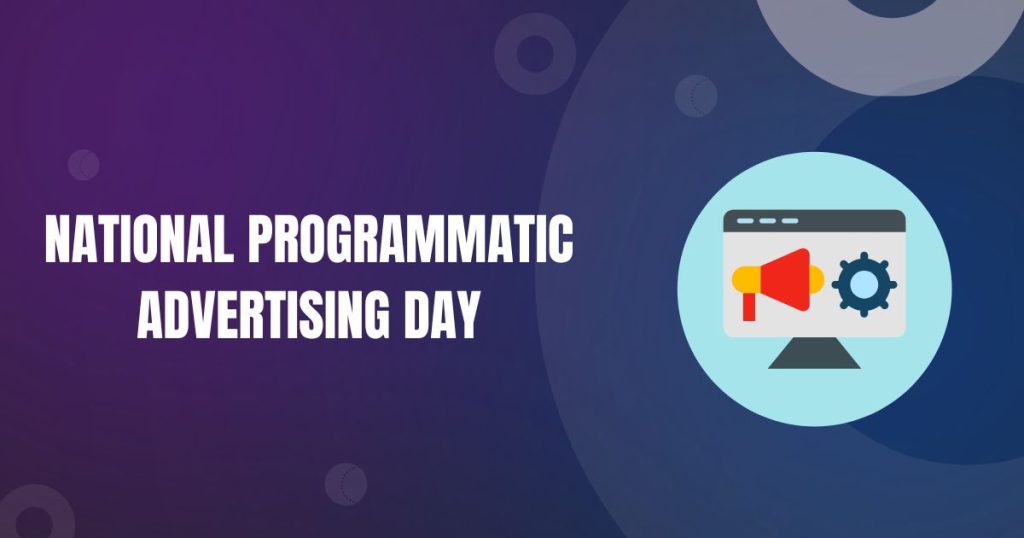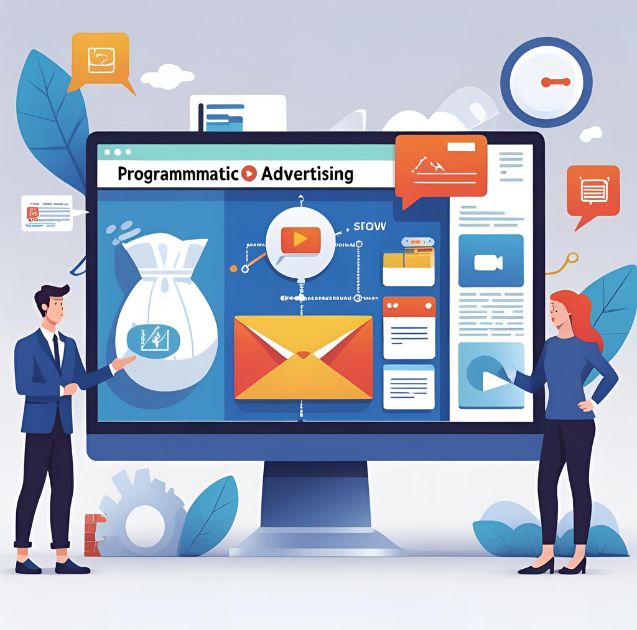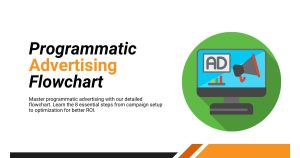National Programmatic Advertising Day: Why It Matters More Than Ever

Every year on January 23rd, the digital marketing world celebrates National Programmatic Advertising Day—a day dedicated to recognizing the technology that has fundamentally transformed how brands reach their audiences. While this might seem like just another industry observance, programmatic advertising represents one of the most significant shifts in marketing history, automating the buying and selling of digital ad space in real-time.
For marketers, advertisers, and business owners, understanding programmatic advertising is no longer optional. This automated approach to digital advertising now accounts for the majority of digital display ad spending worldwide, making it essential knowledge for anyone looking to maximize their marketing ROI. Whether you’re new to programmatic or looking to refine your existing strategy, this comprehensive guide will help you navigate the complexities and opportunities of automated advertising.
What Is Programmatic Advertising?

Programmatic advertising is the automated buying and selling of digital advertising space using software and algorithms. Instead of traditional methods that required manual negotiations, phone calls, and paperwork, programmatic advertising uses real-time bidding (RTB) to purchase ad inventory in milliseconds.
The process works through demand-side platforms (DSPs) and supply-side platforms (SSPs). Advertisers use DSPs to set their targeting criteria, budgets, and bid amounts. Publishers use SSPs to make their ad inventory available. When a user visits a website, an auction occurs in real-time, with the highest bidder’s ad being displayed, all within the time it takes for the page to load.
This automation extends beyond just the buying process. Programmatic platforms can optimize campaigns in real-time, adjusting bids, targeting, and creative elements based on performance data. The result is more efficient ad spending and better targeting precision than traditional manual methods.
The Evolution of Digital Advertising
Digital advertising has come a long way since the first banner ad appeared on HotWired.com in 1994. The early days of digital marketing relied heavily on direct relationships between advertisers and publishers, with media buyers manually negotiating placements and prices.
The introduction of ad networks in the late 1990s began to automate some aspects of ad buying, but the real revolution came with the development of real-time bidding technology in the late 2000s. This innovation allowed advertisers to bid on individual ad impressions rather than buying bulk inventory, creating unprecedented targeting opportunities.
Today’s programmatic landscape includes various buying methods, from open auctions accessible to all advertisers to private marketplaces where premium publishers offer inventory to select buyers. Header bidding, server-to-server connections, and advanced audience segmentation have further refined the ecosystem, making it more efficient and transparent than ever before.
Key Benefits of Programmatic Advertising
Enhanced Targeting Precision
Programmatic advertising offers targeting capabilities that far exceed traditional advertising methods. Advertisers can target users based on demographics, interests, browsing behavior, location, device type, and even weather conditions. First-party data integration allows brands to reach their existing customers with personalized messages, while third-party data expands reach to similar audiences.
Lookalike modeling uses machine learning to identify potential customers who share characteristics with a brand’s best existing customers. This sophisticated targeting reduces waste and improves campaign relevance, leading to higher engagement rates and better return on ad spend.
Real-Time Optimization
Unlike traditional advertising campaigns that require manual adjustments, programmatic platforms continuously optimize performance. Algorithms analyze thousands of data points to determine which combinations of targeting, creative, and placement deliver the best results.
This real-time optimization extends to budget allocation, automatically shifting spend toward high-performing segments while reducing investment in underperforming areas. Creative optimization tests different ad variations simultaneously, identifying the most effective messaging for different audience segments.
Cost Efficiency and Transparency
Programmatic advertising eliminates many of the inefficiencies associated with traditional media buying. Automated processes reduce the need for manual work, while real-time bidding ensures advertisers never pay more than necessary for ad placements.
Advanced reporting provides detailed insights into where ad dollars are spent, which placements perform best, and how audiences engage with campaigns. This transparency allows marketers to make data-driven decisions and continuously improve their strategies.
Scale and Speed
Programmatic platforms provide access to vast amounts of inventory across thousands of websites, mobile apps, and connected TV platforms. This scale allows advertisers to reach their target audiences wherever they spend time online, rather than being limited to specific publishers or platforms.
The speed of programmatic buying means campaigns can launch quickly and adjust in real-time to market conditions, seasonal trends, or competitive pressures. This agility is particularly valuable for time-sensitive promotions or rapidly changing market conditions.
Current Trends Shaping Programmatic Advertising
Connected TV and Video Growth
Connected TV (CTV) advertising has emerged as one of the fastest-growing segments in programmatic advertising. As cord-cutting continues and streaming services proliferate, advertisers are shifting budgets from traditional television to programmatic CTV campaigns.
Video advertising extends beyond CTV to include in-stream, out-stream, and interactive video formats across desktop and mobile platforms. Advanced video targeting capabilities allow advertisers to reach specific audiences with engaging video content, combining the impact of television advertising with digital precision.
Privacy-First Advertising
The deprecation of third-party cookies and increasing privacy regulations have accelerated the shift toward first-party data strategies. Advertisers are investing in customer data platforms (CDPs) to collect, organize, and activate their own customer data for programmatic campaigns.
Contextual advertising is experiencing a renaissance as brands seek cookie-free targeting alternatives. By analyzing page content, user behavior patterns, and environmental factors, contextual targeting can deliver relevant ads without relying on personal identifiers.
Artificial Intelligence and Machine Learning
AI and machine learning are becoming increasingly sophisticated in programmatic advertising. Predictive algorithms can forecast which users are most likely to convert, while automated creative optimization generates personalized ad experiences at scale.
Natural language processing helps analyze contextual signals for better ad placement decisions, while computer vision technology ensures brand safety by analyzing the visual content of web pages and videos.
Getting Started with Programmatic Advertising
Define Your Objectives
Before launching programmatic campaigns, clearly define your marketing objectives. Are you looking to drive brand awareness, generate leads, increase sales, or retarget existing customers? Different objectives require different strategies, targeting approaches, and success metrics.
Consider your target audience demographics, interests, and online behavior patterns. The more specific your audience definition, the better programmatic platforms can optimize your campaigns for success.
Choose the Right Platform
Selecting the appropriate demand-side platform depends on your budget, targeting needs, and technical capabilities. Enterprise-level DSPs offer advanced features and extensive inventory access but may require significant minimum spends and technical expertise.
Self-serve platforms provide easier entry points for smaller advertisers, while managed service options offer expert guidance for companies new to programmatic advertising. Evaluate platform capabilities, inventory quality, and support levels when making your selection.
Start Small and Scale
Begin with modest budgets to test different targeting strategies, creative approaches, and optimization settings. Use A/B testing to compare programmatic performance against other digital advertising channels, focusing on metrics that align with your business objectives.
As you gain experience and identify winning strategies, gradually increase budgets and expand to additional formats, platforms, and audience segments. Document what works and what doesn’t to build institutional knowledge for future campaigns.
The Future of Programmatic Success

National Programmatic Advertising Day serves as an important reminder of how far automated advertising has come and where it’s headed. As privacy regulations evolve and new technologies emerge, programmatic advertising continues adapting to meet advertiser needs while respecting user preferences.
The brands that will succeed with programmatic advertising are those that embrace its data-driven nature while maintaining focus on customer value and creative excellence. By combining sophisticated targeting with compelling messaging and continuous optimization, programmatic advertising offers unparalleled opportunities to reach the right audiences with the right message at the right time.
Take this opportunity to evaluate your current programmatic strategy or explore how automated advertising could enhance your marketing efforts. The technology that seemed revolutionary just a few years ago is now table stakes for competitive digital marketing success.





